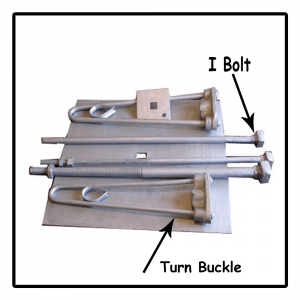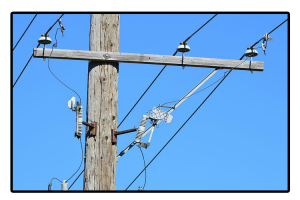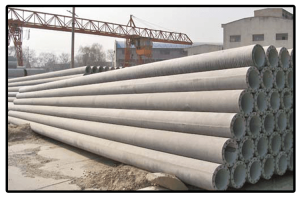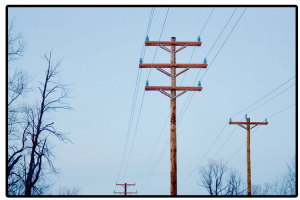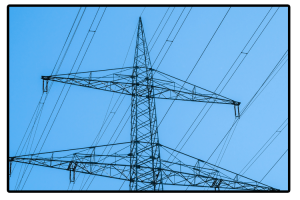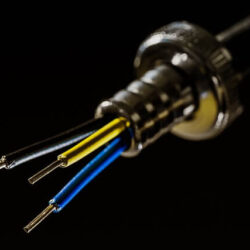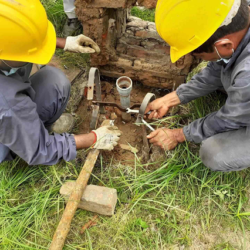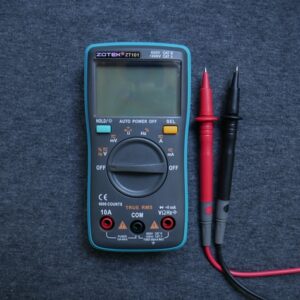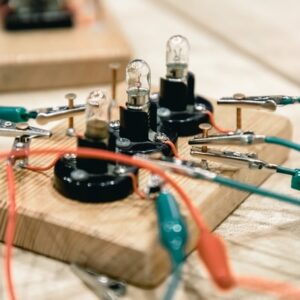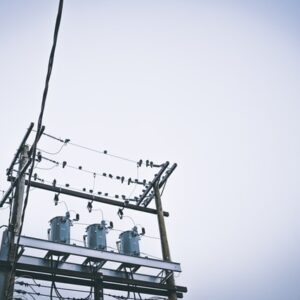Electrical Pole is a large number of discussion words or a topic. So in this article, we will explain briefly about Electrical Pole, Electrical Pole Accessories, Types of Electrical Pole and Electrical Pole Installation.
After that, we will discuss some important questions and answers that are predicted in our minds. So, please keep up with the article and enjoy all the knowledge that is served by Wirekhoj.
This is the biggest problem in the electrical field. People know about practicals, but they do not know about these things, what their work is often, they do not have any idea of its theory.
This topic will help you in electrical engineering after school and other electrical industrial training. So, first of all, we are trying to understand the Electrical Pole Concepts and their features.
Table of Content
Electrical Pole
The Electrical Pole is used to carry the Overhead Power Line. Overhead Power Line is a concept or a structure that is used for electrical power transmission or distribution of electrical energy across large distance areas.
In simple words, an Electrical Pole is an electrical tower line that is used to transmit or distribute electrical energy at a large distance of the area.
When the multiple numbers of the electrical lines come across the point then electrical poles are used to distribute the energy in the form of electricity or electrical.
In the Electrical Pole, many wires are attached to send the electricity from the different types of areas. This process of the electric poles helps you to generate electricity at the different types of locations.
Electrical Pole Accessories
There are used different types of accessories in the electrical pole. But there is the main type of the accessories used to stand the electrical pole that is named as given below in detail and briefly.
Stay
Stay is used for supporting the pole. When you have to stand the electrical pole then staying is a very important function to stay at the pole.
Now we understand how it can help to support the electrical pole. A Distribution transformer or DTR Structure sends the LT (Low Tension) line in the range of 230 – 430 lines.
Stay used at the location where the pole is started and where the pole takes the angle. If we use the stay then the pole wire is balanced. So we used it on the starting and angle or ending point of the pole.
We used two types of stay in the electrical pole that is as follows:
Normal Stay: Normal stay we provide 2.5 to 3 meters at the distance. Stay wire is used in the pole. It ends in the earth from the opposite side that you have seen in the image.
Fly Stay: It is a process whenever normal stay is not applicable then we used this process called fly stay. It exists in the range of 1 to 2 meters of distance.
Note: Where the space is more than we used the normal stay and where the space is very low or few amount then we used the fly stay.
Materials for Stay
So, we need different types of material for the stay in the electric pole. The material list is given below in brief:
- Stay Clamp
- Turn Buckle
- I Bolt
- Guy Insulator
- Thimble
- I Rod / Anchor Rod
- Anchor Plate
- Stay Wire
So, these are the materials that are used to complete the stay for the electrical poles. Now we will explain all of them in brief.
Turn Buckle: A turnbuckle is a type of iron rod that is bent. And two endpoints of the iron rod are attached with the plate of the rod. You can see the image that is given below.
I Bolt: It is also an iron rod that is bent in the circle shape from one and. The second end is staring at the opposite side of the first end.
Turnbuckle and I Bolt: It is the phenomenon in which both Turn Buckle and I Bolt are attached or associated with each other is called Turnbuckle and I Bolt.
Thimble: It is also a thin iron plate that is bent in shape.
I Rod / Anchor Rod: It is a Rod that is shaped in the I, it is approximately 1800 mm breadth.
Anchor Plate: Anchor Plate is very thick at around 6MM. The length of this anchor plate is approximately 200 MM and the breadth is also 200 MM. This means it consists of the square shape of the anchor plate. It is made with galvanic steel.
Guy Insulator: It is the type of insulator and is seen to look like the resistance. But the work is more different. It is also used in the electrical pole.
Stay Wire: It is the main object or component which is used to stand the electrical pole. If we don’t use this component then the electrical pole never stands easily. In the electrical pole using the 7 / 10 SWG stay wire is used.
Additional Read : Best Wires for House Wiring
So these all are the accessories which are used in the electrical pole. If you want to do the electrical pole then you need all the accessories for the installation.
Types of Electrical Pole
So, Guys, there are many different types of electric poles. The list of the different types of electrical poles is given below in detail.
- Wooden Electric Pole
- Concrete Electric Pole
- Steel Pole Steel Towers
So guys there are four types of poles. Now we understand about all of them what are the features and functions of these electrical poles.
Wooden Electric Pole
The wooden electric pole is made of a shaal wooden material. It is used in LT lines, HT lines, and sometimes up to 33 KV lines. Wooden electric pole costs are very low as compared to other electrical poles.
Wooden Electric Pole weight is approximately 815 KG per cubic meter. Nowadays, the wooden pole is banned for use because it saves the forest.
Concrete Electric Pole
In this cement or concrete electric pole exists in two types like PCC and RCC Pole.
PCC Pole: In PCC Pole is made of cement concrete.
RCC Pole: In RCC Pole is made with the help of cement concrete and the rod.
A Concrete Electric pole is a longer life. It consists of 7 to 8 meters of height. There is one disadvantage: the more weight and easily breakable these concrete electric poles.
Steel Poles
There are also three types of steel poles. These types of the steel pole are given below:
- Tubular Pole or Steel
- Rail Pole
- Rolled Steel Joists
Tubular Pole or Steel: The Tubular Pole or Steel are of round cross-section.
Rail Pole: Rail Pole looks like a track of the railway.
Rolled Steel Joists: Rolled Steel Joists are of the “I” cross-section.
If we are talking about the steel pole then the mechanical strength is more than other types of the pole. Steel Poles span up to 50 to 80 meters. These poles are more costly as compared to wooden or other types of electrical poles. The lifeline of the steel pole is more.
Additional Read : Plate Earthing
Steel Towers
Steel Towers are used in Transmission lines. The span of the steel tower consists of 300 meters or above from 300 meters.
The mechanical strength and lifeline value are very high. The cost of the steel towers is more than others.
However, guys, these are the four different types of electric poles. Now we are moving from the next topic which is as given below.
Electrical Pole Installation
So, this is the basic and main topic regarding the electric pole installation. Many of the builders are searching from the browser how to install the electrical pole or how to plant the electric pole instantly in five minutes.
If you want to install the electric pole then you need two types of the pole. We recommend that the steel pole is more battery for the electrical installation for a long time.
Now make the two holes in the earth and place the two steel poles in it. After that, you have placed the cement or concrete to hold the pole in the earth. Use Cement and concrete to become a powerful installation.
Additional Read : Electrical Bulb Holder Types
After that, use the stay wires and stay material in your electrical pole to stand or support it. Other information we share in the above electrical pole accessories. You can easily read that and get the full information.
Conclusions
So, In this topic, we discuss the electrical pole, electric pole accessories, and types of electrical poles. We also discuss the electrical pole installation.
I hope you enjoy our article, if you like our article then please share this article with your friends and relatives.
If you have any queries related to our article then please contact us via the comment and contact us page section.

